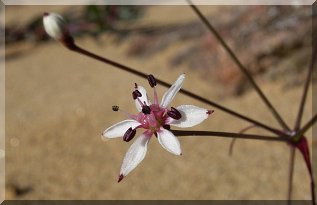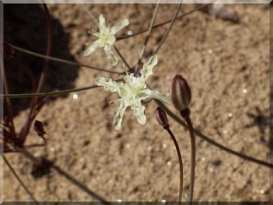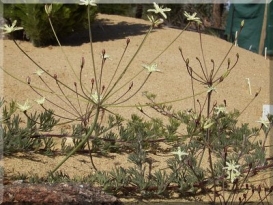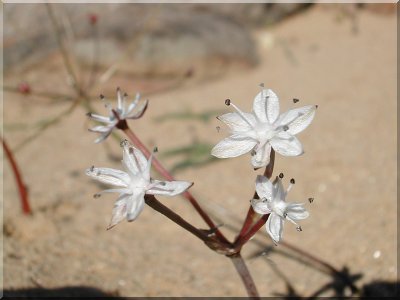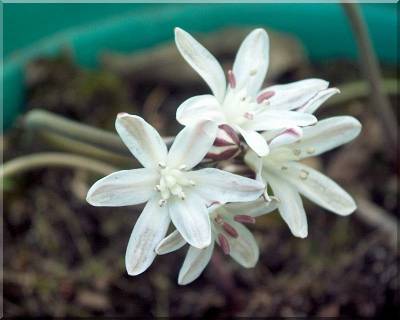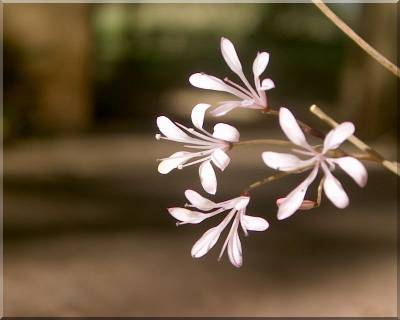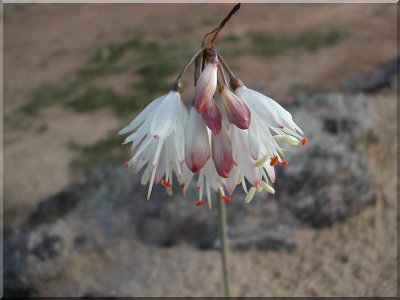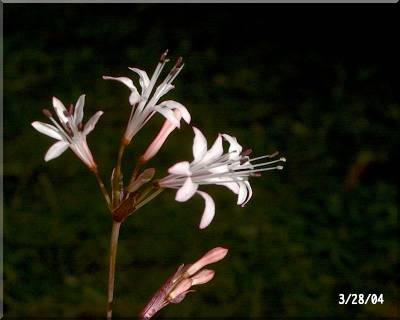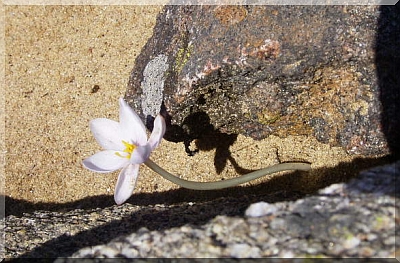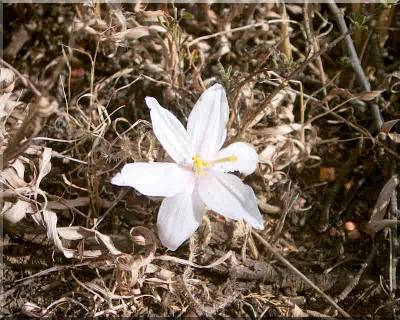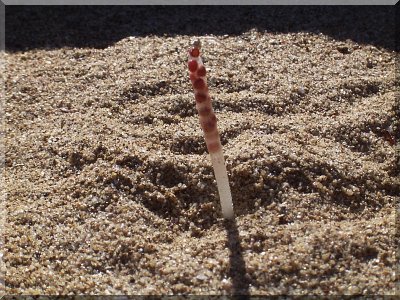| Hessea = about 12 species* and Strumaria = about 10 species*
Hessea pulcherrima flowering at Mainly Amaryllids Garden 2004.
Hessea and Strumaria are small nerine like looking bulbs. These dainty little gems are excellent rockery or pot plants. Easily grown, the seeds prefer to be planted and left until the bulbs mature. I plant these straight into the collection beds, in deep sand, where they stay until they flower.
Strumaria gemata and S. chaplinii in flower in a collection bed.
Hessea stellaris at Mainly Amaryllids Garden 2004. Foliage can differ tremendously. Leaves can be prostrate H. , spiralled, ovate, upright and 'v' shaped. Flowers also differ and can be dropping, 'star' like, small or large, generally with seed head that detach with age and spread the seeds as they roll around in the wind. Above, Strumaria picta. Image by
Above, Strumaria salteri. Image by Cameron McMaster 2004. image here Above, Strumaria tenella
Above, Strumaria truncata at Mainly Amaryllids Garden 2004.
Above, Strumaria watermeyeri. Image by Cameron McMaster 2004. Gethyllis = 32 species* and Apodolirion = about 6 species* Gethyllis and Apodolirion are closely aligned with respect that Gethyllis grow during the winter months and Apodolirion are summer growers ( with the exception of A. lanceolatum*). This is one very interesting group of bulbs. Cultivation of Gethyllis, for me, is in deep beds of sand. These are rarely watered ( we do have some summer rain, around 1 - 2 inches) and grow quite well here at Barnawartha.
Gethyllis villosa at Mainly Amaryllids Garden 2004.
Gethyllis villosa in the wild. Image by Apodolirion is another story. I have first obtained seeds of this genus this season and have yet to record how the seeds germinate and survive here. I am using a medium with 1 parts seedling raising mixture and 4 parts sand. I will post here how the seeds do, and hopefully in time report success. The image below of Apodolirion macowanii ,clearly shows why one should be interested in this genus. It is beautiful! Apodolirion macowanii , Ecca Pass (T Dold), Eastern Cape, South Africa As I learn more about the genus included on this page I will publish the findings here. Happy growing, Dash.
Gethyllis villosa seed ripens underground and there is a long pause between flower pollination and seed head appearance. Once the seed is ripe, the bulb pushes the seed head up through the soil where the seeds can be dispersed. Many of the seeds heads have a fruity and pleasant perfumes and are used by Afrikaans in drinks and tonics. * This was a first for me this season. Seeing it first hand was a delight! Gethyllis seeds germinate rapidly once ripe. Sowing the seeds as soon as possible. |
